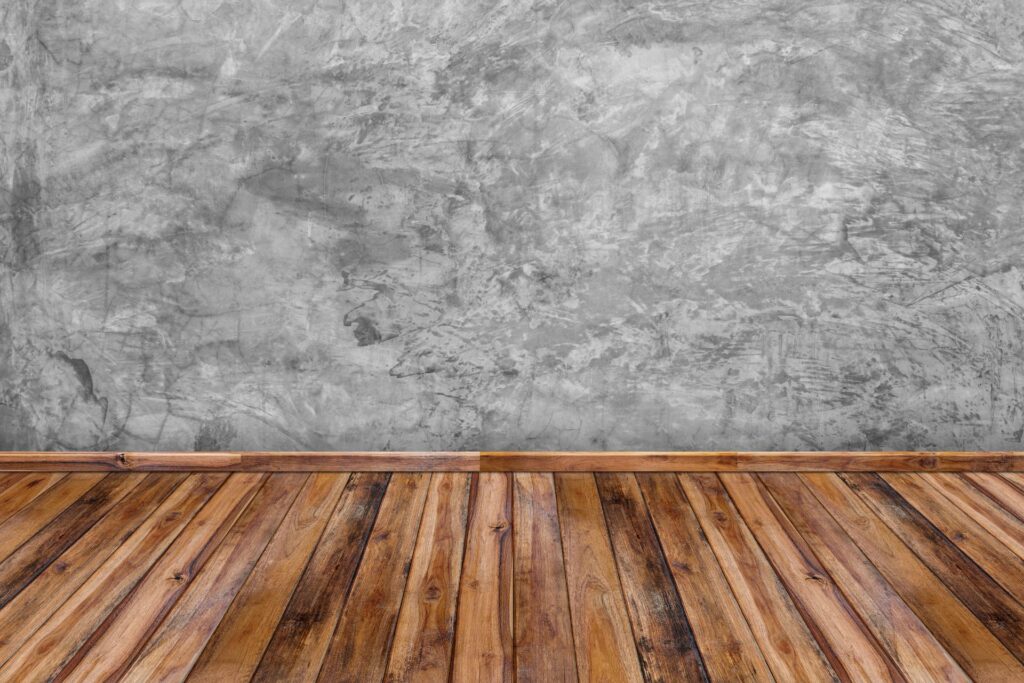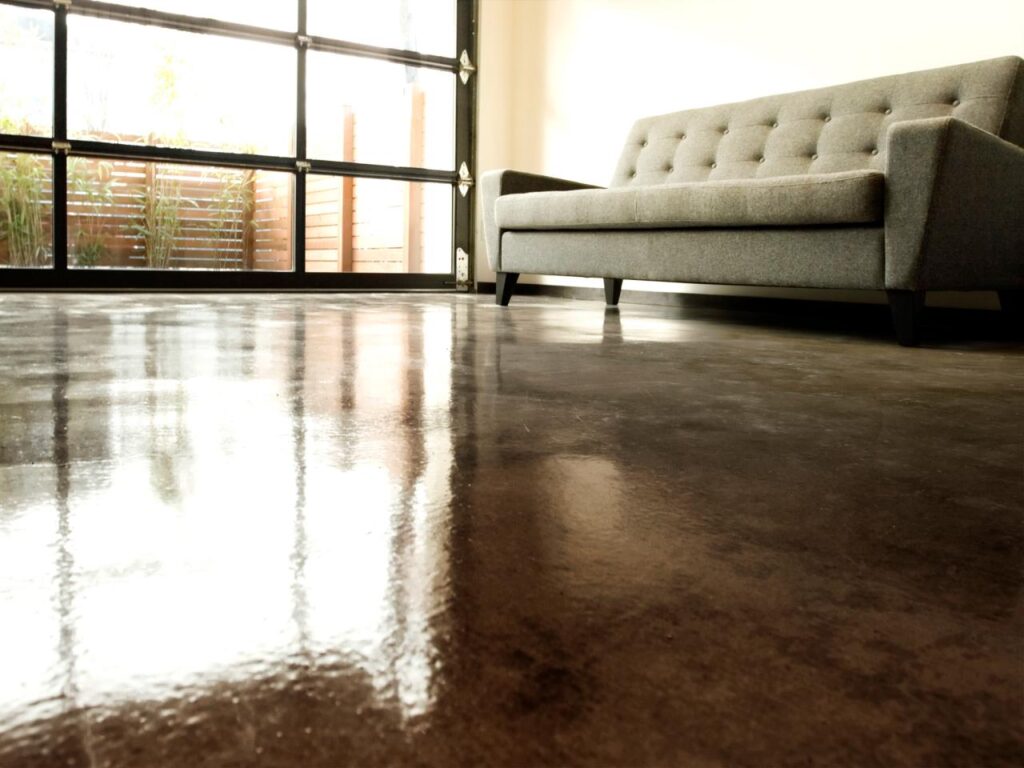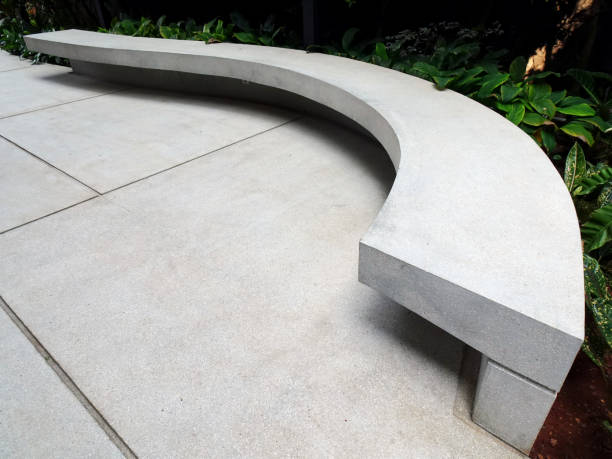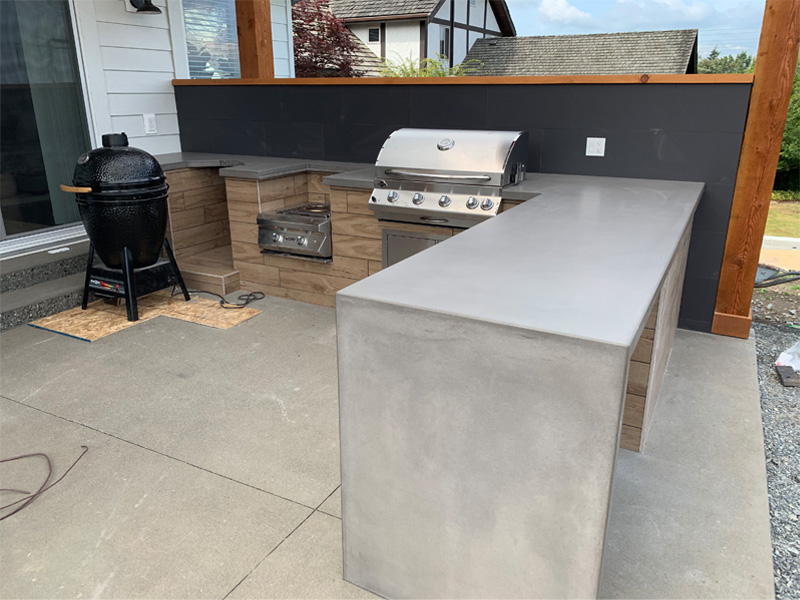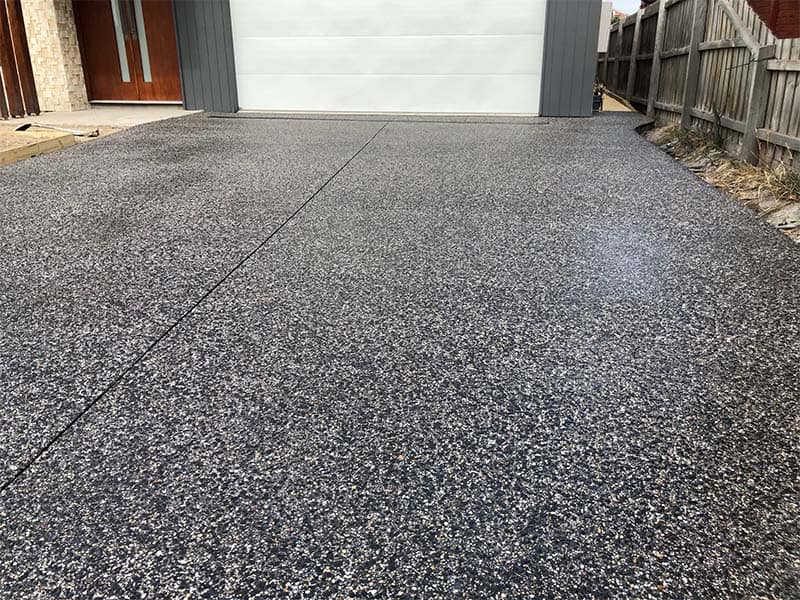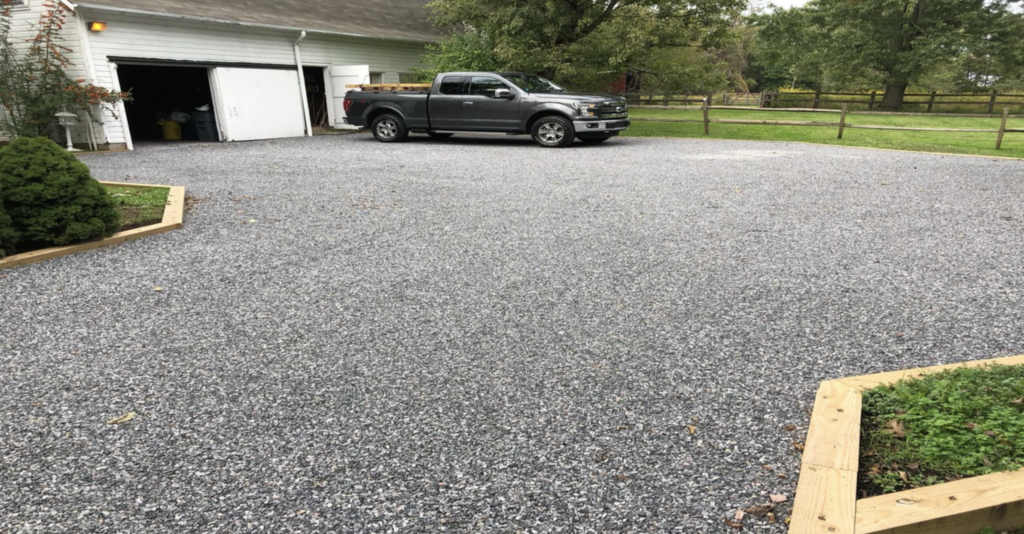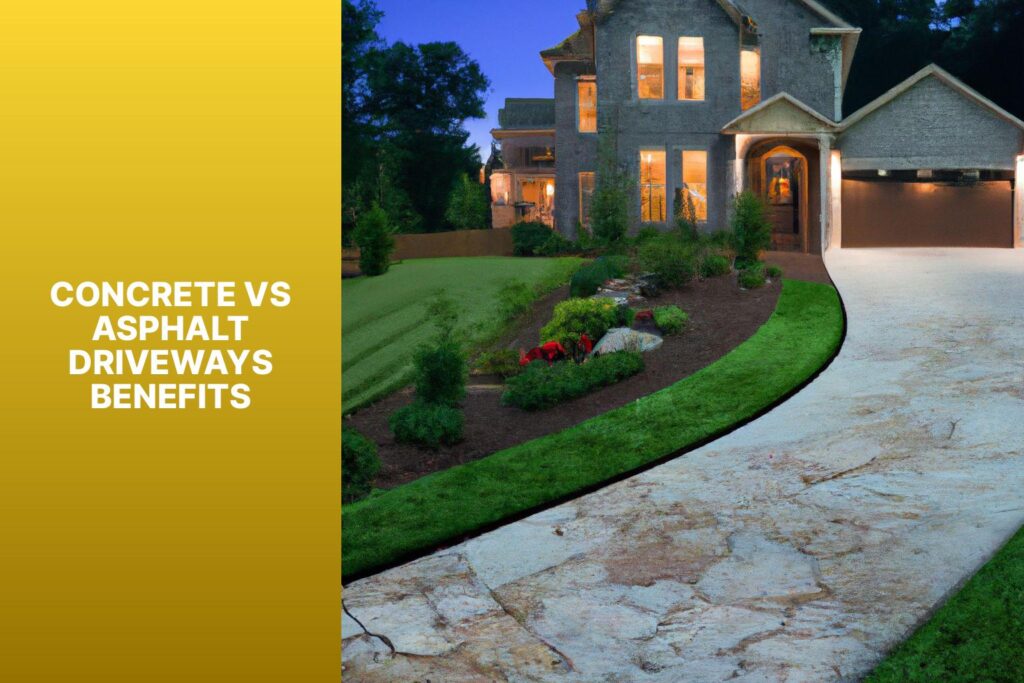Welcome to our comprehensive guide on choosing the right flooring for your home in New Zealand. With so many options available, it can be challenging to decide between the concrete slab and timber floor, two of the most popular choices. In this blog post, we will delve into the characteristics, benefits, and drawbacks of both flooring types, helping you make an informed decision that suits your needs and lifestyle. Whether you’re building a new home or renovating an existing one, understanding the differences between concrete slab and timber flooring is crucial for achieving the perfect balance of aesthetics, comfort, and functionality. So, let’s explore these options and find out which flooring solution is best for your New Zealand home.
Choosing between a concrete slab and a timber floor in New Zealand depends on various factors such as durability, cost, aesthetic appeal, and insulation properties. Concrete slabs offer strength, low maintenance, and excellent thermal mass for underfloor heating, making them ideal for modern, industrial aesthetics. In contrast, timber floors provide natural beauty, warmth, and comfort underfoot, with various styles and finishes available. While timber requires more maintenance and is prone to moisture damage, it enhances the home’s aesthetic appeal and resale value. Assessing your climate, lifestyle, and long-term needs will help you decide which flooring option suits your home best.
- Understanding Concrete Slab Flooring
- Understanding Timber Flooring
- Comparing Concrete Slab And Timber Flooring
- Advantages Of Concrete Slab Flooring
- Advantages Of Timber Flooring
- Disadvantages Of Concrete Slab Flooring
- Disadvantages Of Timber Flooring
- Case Studies And Examples
- Making The Right Choice For Your Home
- FAQs: Concrete Slab Vs Timber Floor NZ
- What are the main differences between concrete slab and timber flooring?
- Which flooring option is more cost-effective in New Zealand?
- How does the installation process differ between concrete slabs and timber floors?
- Which flooring option is more environmentally friendly?
- Is concrete slab flooring comfortable to walk on?
- What are the maintenance requirements for timber flooring?
- Can timber flooring be used in any part of the house?
- What are the potential issues with concrete slab flooring?
- How do the aesthetic appeals of concrete slab and timber flooring compare?
- What factors should I consider when choosing between concrete slab and timber flooring?
- Conclusion
Understanding Concrete Slab Flooring
Concrete slab flooring is a popular choice for many homeowners and builders in New Zealand due to its durability, versatility, and cost-effectiveness. This section will provide a comprehensive understanding of what concrete slab flooring entails, including its definition, composition, types, and installation process.
Definition and Composition
What is a concrete slab?
A concrete slab is a flat, horizontal surface made of cast concrete. It serves as a foundation for floors, roofs, or ceilings in residential, commercial, and industrial buildings. Concrete slabs can be found in a variety of thicknesses, depending on the intended use and load-bearing requirements.
Materials used in concrete slabs
Concrete slabs are composed of a mix of materials, each playing a crucial role in the slab’s strength and stability. The primary components include:
Cement: The binding agent that holds the other materials together. It is typically made from limestone and clay.
Sand: Provides bulk and strength to the concrete mix.
Gravel: Also known as aggregate, gravel helps to reduce shrinkage and adds to the overall strength of the slab.
Water: Activates the cement, causing it to harden and bind the sand and gravel together.
Types of Concrete Slabs
Slab-on-grade
A slab-on-grade is poured directly onto the ground. It is commonly used in residential construction for ground-level floors. This type of slab is reinforced with steel mesh or rebar to prevent cracking. Slab-on-grade floors are ideal for climates where the ground doesn’t freeze, as they can be vulnerable to frost heave.
Suspended slabs
Suspended slabs are elevated above the ground, often supported by columns or walls. They are used in multi-story buildings and structures where a ground-level slab isn’t feasible. These slabs must be engineered to handle the load and stresses of the structure above.
Precast concrete slabs
Precast slabs are manufactured off-site in a controlled environment, ensuring consistent quality and strength. They are then transported to the construction site and installed. Precast slabs are often used in commercial and industrial buildings due to their quick installation time and reduced on-site labor.
Installation Process
Preparing the site
The first step in installing a concrete slab is site preparation. This involves clearing the area of debris, vegetation, and topsoil. The ground is then leveled and compacted to provide a stable base for the slab. For slab-on-grade installations, a layer of crushed stone or gravel is often added to improve drainage and prevent moisture problems.
Pouring the concrete
Once the site is prepared, forms are constructed to contain the concrete and define the slab’s shape and size. The concrete mix is then poured into the forms, starting at one end and working towards the other to ensure an even distribution. During the pour, the concrete is spread and leveled using a screed or straightedge.
Curing time and process
Curing is a crucial step in the installation process, as it allows the concrete to develop its full strength and durability. The curing process involves keeping the concrete moist and at a suitable temperature for a specified period, usually seven days or more. This can be achieved by covering the slab with wet burlap, plastic sheeting, or applying a curing compound.
Understanding concrete slab flooring is essential for anyone considering this durable and versatile option for their home or building project. By knowing the definition, composition, types, and installation process, you can make informed decisions and ensure a successful outcome for your concrete flooring needs.
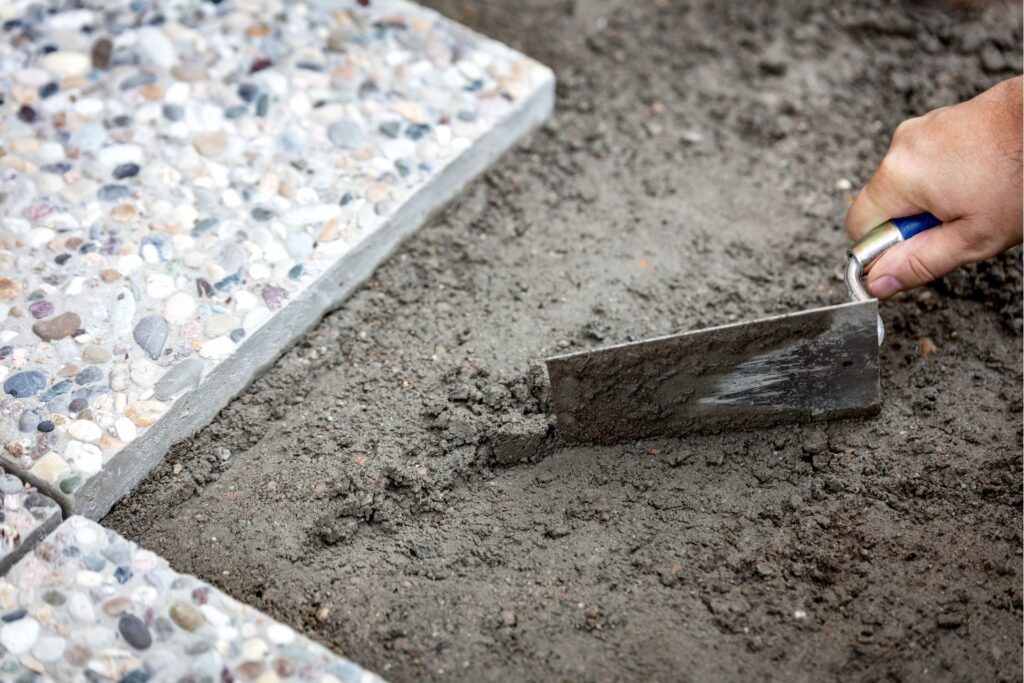
Understanding Timber Flooring
Definition and Composition
What is Timber Flooring?
Timber flooring is a popular choice for many homeowners due to its natural beauty, durability, and timeless appeal. Essentially, timber flooring consists of planks or strips of wood that are milled from various types of timber. These planks can be laid directly onto a subfloor, offering a solid, stable, and aesthetically pleasing surface that can complement any interior style.
Types of Timber Used
Different types of timber can be used for flooring, each offering unique characteristics and benefits:
Oak: Known for its strength and durability, oak is a classic choice that offers a range of colors from light to dark brown. It’s highly resistant to wear and tear, making it suitable for high-traffic areas.
Pine: Pine is a softer wood compared to oak, which means it can dent more easily. However, its affordability and the charming patina it develops over time make it a favorite in rustic and traditional homes.
Bamboo: Technically a grass, bamboo is an eco-friendly alternative to traditional timber. It is extremely hard and resistant to moisture, making it ideal for kitchens and bathrooms.
Types of Timber Floors
Solid Timber Flooring
Solid timber flooring is made from single pieces of wood, usually around 18-20mm thick. These planks are incredibly durable and can last for decades, even centuries, with proper care. Solid timber floors can be sanded and refinished multiple times, allowing homeowners to refresh their floors periodically.
Engineered Timber Flooring
Engineered timber flooring consists of a top layer of real wood bonded to several layers of plywood or high-density fiberboard (HDF). This construction makes it more stable and less prone to warping compared to solid timber. Engineered floors offer the same aesthetic appeal as solid timber but are generally easier and faster to install.
Laminate Timber Flooring
Laminate timber flooring mimics the look of real wood but is made from synthetic materials. It has a photographic layer that replicates the appearance of timber, topped with a clear protective layer. While it’s more affordable than solid and engineered timber, laminate flooring is also less durable and cannot be refinished.
Installation Process
Preparing the Subfloor
Before installing timber flooring, it’s crucial to prepare the subfloor properly. This involves cleaning and leveling the subfloor to ensure a smooth, stable base. Any moisture issues must be addressed to prevent future problems like warping or mold growth.
Laying the Timber Planks
The actual installation of timber flooring can vary depending on the type of floor. For solid and engineered timber, the planks can be nailed, glued, or floated over the subfloor. Precise measurement and cutting are essential to ensure a snug fit and an attractive finish.
Finishing Touches
Once the timber planks are laid, the final steps involve sanding and sealing the floor. Sanding smooths out any unevenness and prepares the surface for sealing. Sealing protects the timber from moisture and wear, enhancing its durability and appearance. Various finishes are available, from matte to high gloss, allowing homeowners to choose the look that best suits their style.
Understanding timber flooring involves recognizing its composition, the different types available, and the detailed installation process. Whether you choose the timeless appeal of solid timber, the stability of engineered timber, or the affordability of laminate, timber flooring can enhance the beauty and value of your home for years to come.

Comparing Concrete Slab And Timber Flooring
When choosing between concrete slab and timber flooring for your home, several factors come into play, such as durability, cost, aesthetic appeal, comfort, and environmental impact. Understanding these aspects can help you make an informed decision that suits your lifestyle and budget.
Durability and Longevity
Concrete Slab
Concrete slabs are renowned for their exceptional durability and longevity. They are highly resistant to wear and tear, making them an ideal choice for high-traffic areas. A well-constructed concrete slab can last for decades without significant degradation. Additionally, concrete is resistant to moisture, pests, and fire, which adds to its longevity and low maintenance requirements.
Timber Floor
Timber floors, while beautiful, require more attention and care. Natural wood is prone to scratches, dents, and general wear over time. However, with proper maintenance, such as regular polishing and occasional sanding, timber floors can also last for many years. It’s important to choose the right type of wood and finish to enhance durability. Some hardwoods, for example, are more resistant to damage than others.
Cost Analysis
Initial Installation Costs
The cost of installing a concrete slab is generally higher than timber flooring due to the labor-intensive process of pouring, leveling, and curing the concrete. Additionally, concrete slabs may require reinforcing materials, which add to the cost.
Timber flooring can vary widely in cost depending on the type of wood used. Softwoods are generally cheaper than hardwoods, and engineered wood can offer a more budget-friendly option while still providing the look of natural wood.
Long-term Maintenance Costs
Concrete slabs are relatively low-maintenance. They may need occasional sealing to protect against stains and minor repairs for cracks, but these costs are typically minimal over the slab’s lifespan.
Timber floors, on the other hand, require regular maintenance to keep them looking their best. This can include polishing, refinishing, and replacing damaged boards. Over time, these maintenance tasks can add up, making timber floors more expensive to maintain in the long run.
Potential for Value Addition to Property
Both concrete slabs and timber floors can add value to your property, but this can depend on the preferences of potential buyers. Some may appreciate the modern, sleek look of concrete, while others may prefer the warm, natural appearance of timber.
Aesthetic Appeal
Concrete Slab
Concrete slabs offer a modern, industrial look that can be very appealing in contemporary home designs. They provide a sleek, minimalist aesthetic that pairs well with modern furnishings and decor. Concrete can also be stained or polished to achieve a variety of finishes, from matte to high gloss.
Timber Floor
Timber floors are known for their warm, natural, and versatile look. They can complement almost any style of home, from traditional to modern. Timber flooring adds a sense of warmth and coziness that is hard to replicate with other materials. The variety of wood types, colors, and grain patterns available means that you can find a timber floor to match any design scheme.
Comfort and Insulation
Concrete Slab
One of the main drawbacks of concrete slabs is that they can be cold and hard underfoot. This can make them less comfortable to walk on, especially in cooler climates. However, underfloor heating can be installed to mitigate this issue and provide a more comfortable living environment.
Timber Floor
Timber floors, by contrast, offer natural warmth and comfort. Wood is a good insulator, helping to keep your home warm in the winter and cool in the summer. Walking on a timber floor is generally more comfortable, which can be an important consideration for families with young children or elderly members.
Environmental Impact
Sustainability of Materials
When considering the environmental impact, it’s essential to look at the sustainability of the materials used. Concrete production is energy-intensive and contributes to significant carbon emissions. However, concrete is highly durable and can last for many years, reducing the need for frequent replacements.
Timber, as a natural and renewable resource, can be a more sustainable choice, especially if sourced from responsibly managed forests. Look for certifications like FSC (Forest Stewardship Council) to ensure the wood is harvested sustainably.
Energy Efficiency
The thermal properties of the flooring material also play a role in energy efficiency. Concrete has high thermal mass, meaning it can absorb and store heat, which can help regulate indoor temperatures and reduce heating and cooling costs. However, this benefit is more pronounced in climates with significant temperature fluctuations between day and night.
Timber flooring, while not as effective at thermal mass, provides good insulation properties, helping to maintain a comfortable indoor environment and potentially lowering energy bills.
In conclusion, the choice between concrete slab and timber flooring depends on your specific needs, preferences, and budget. Concrete offers unmatched durability and a modern aesthetic, while timber provides natural warmth and comfort with a timeless appeal. Consider these factors carefully to make the best decision for your home.
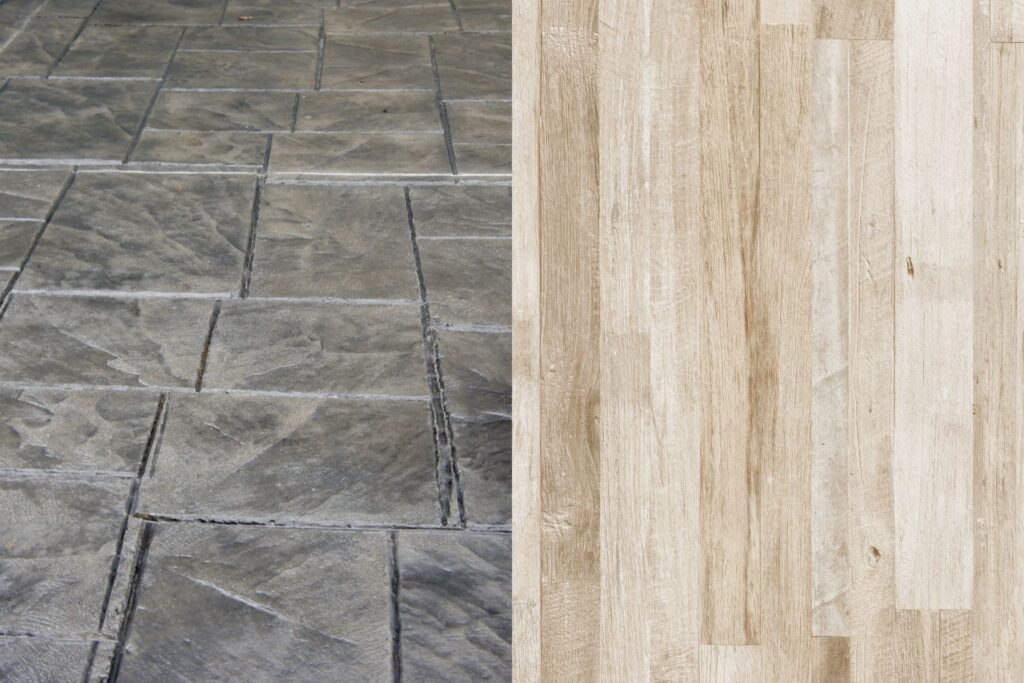
Advantages Of Concrete Slab Flooring
Strength and Stability
One of the standout benefits of concrete slab flooring is its exceptional strength and stability. Concrete slabs can support heavy loads, making them ideal for both residential and commercial buildings. Whether you’re constructing a multi-story building or a single-family home, concrete slabs provide a solid foundation that can withstand significant weight and stress. This durability ensures the longevity of the structure, reducing the need for frequent repairs or reinforcements over time.
Concrete’s robustness also makes it suitable for a variety of building types. From industrial warehouses to modern office spaces and cozy homes, concrete slab flooring is versatile and reliable. Its ability to handle different types of construction projects with ease is a testament to its adaptability and strength, making it a preferred choice for builders and architects alike.
Low Maintenance
Another significant advantage of concrete slab flooring is its low maintenance requirements. Unlike other flooring materials that may need regular upkeep, concrete floors are remarkably easy to clean and maintain. A simple sweep or mop is often sufficient to keep the surface looking pristine. Additionally, concrete is resistant to pests such as termites and moisture, which can be problematic for other flooring types like wood.
This resistance to pests and moisture means that concrete slabs do not suffer from issues like rotting, warping, or insect damage, which can be common in other materials. This durability and ease of maintenance make concrete slab flooring an excellent long-term investment for property owners, saving both time and money on upkeep.
Energy Efficiency
Concrete slab flooring also excels in terms of energy efficiency, thanks to its thermal mass properties. Thermal mass refers to the ability of a material to absorb, store, and release heat. Concrete floors can effectively retain heat during the day and release it slowly when temperatures drop, helping to maintain a consistent indoor temperature. This property can significantly reduce the need for artificial heating and cooling, leading to lower energy bills and a more sustainable living environment.
Moreover, concrete slabs are well-suited for underfloor heating systems. These systems are becoming increasingly popular due to their efficiency and comfort. Underfloor heating provides even warmth throughout the space, eliminating the cold spots that can occur with traditional radiators. The combination of concrete’s thermal mass and underfloor heating creates an energy-efficient solution that enhances the comfort of any building.
In summary, the advantages of concrete slab flooring are multifaceted. Its strength and stability make it suitable for a wide range of building types, while its low maintenance needs and resistance to pests and moisture ensure long-lasting durability. Additionally, the energy efficiency offered by concrete’s thermal mass properties and compatibility with underfloor heating systems make it an environmentally friendly and cost-effective choice. These benefits collectively make concrete slab flooring an excellent option for any construction project.
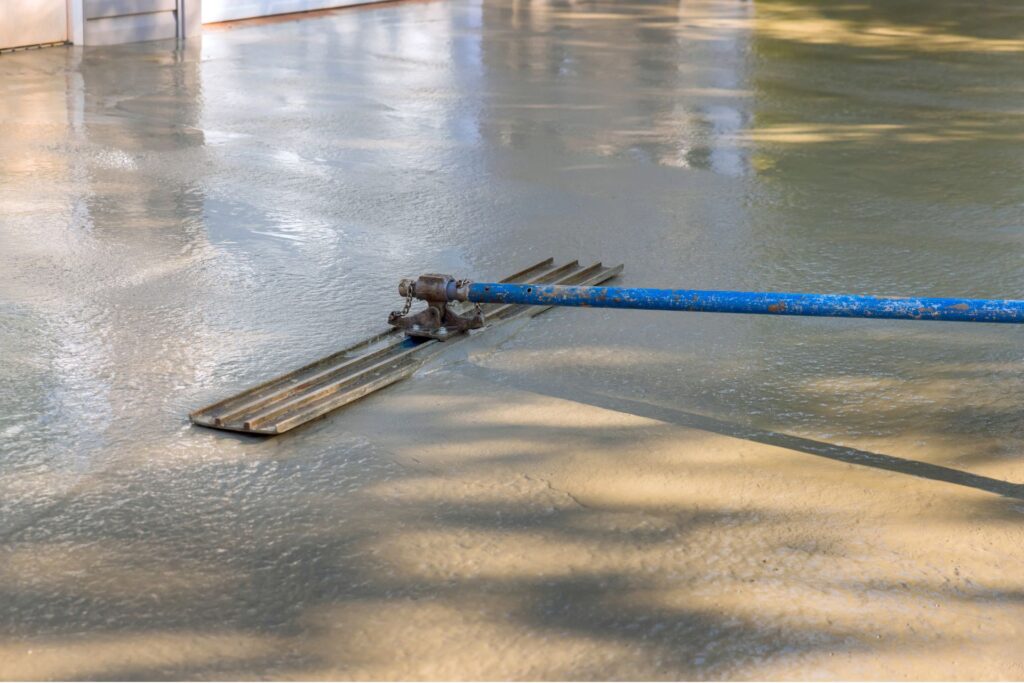
Advantages Of Timber Flooring
Natural Beauty and Warmth
Timber flooring is renowned for its natural beauty and warmth, making it a top choice for many homeowners looking to enhance the aesthetic appeal of their interiors. The unique grains, patterns, and colors of timber floors bring a sense of nature indoors, creating a visually pleasing environment that synthetic flooring options often fail to match. Whether you prefer the rich, deep tones of walnut or the light, airy feel of oak, timber flooring offers a variety of finishes and styles to suit any decor. The natural look of wood can make a space feel more inviting and cozy, contributing to a sense of comfort and well-being.
Comfort and Insulation
Beyond its aesthetic benefits, timber flooring is also prized for its comfort and insulation properties. Unlike tiles or stone, wood has natural insulating properties that help maintain a comfortable temperature in your home. This means timber floors feel warm underfoot, even on chilly mornings. This warmth can be especially appreciated in living rooms and bedrooms, where a cozy atmosphere is desired. Additionally, timber floors provide a bit of cushioning, making them more comfortable to walk and stand on for extended periods compared to harder flooring materials.
Easy to Repair
One of the standout advantages of timber flooring is its repairability. Unlike some other flooring types that may require complete replacement when damaged, timber floors can be easily repaired. If an individual plank becomes scratched or damaged, it can often be replaced without disturbing the rest of the floor. Moreover, timber floors can be refinished multiple times over their lifespan. Sanding down the surface to remove imperfections and applying a new finish can make an old floor look new again. This ability to refinish not only extends the life of the floor but also allows homeowners to update the look of their floors without the need for a complete overhaul.
In summary, timber flooring offers numerous advantages, from its natural beauty and warmth to its comfort and easy repairability. These features make it a desirable choice for homeowners seeking both functionality and aesthetic appeal in their flooring. Whether you’re renovating a single room or outfitting an entire home, timber flooring provides a timeless option that adds value and charm to any space.

Disadvantages Of Concrete Slab Flooring
When considering flooring options for your home, it’s essential to weigh the pros and cons of each material. While concrete slab flooring offers numerous benefits, it also comes with certain drawbacks. Here, we delve into the disadvantages of concrete slab flooring to help you make an informed decision.
Cold and Hard Surface
One of the most significant drawbacks of concrete slab flooring is its cold and hard surface. Concrete is naturally a hard material, which can make it uncomfortable to walk on, especially in colder climates or during the winter months. Without proper insulation, the cold from the concrete can seep into your home, making it less cozy and potentially increasing your heating costs.
To mitigate this issue, you can install radiant heating systems beneath the concrete or use area rugs and carpets to add warmth and comfort. However, these solutions can add to the overall cost and complexity of your flooring project.
Potential for Cracks
Another disadvantage of concrete slab flooring is the potential for cracks over time. Concrete can crack due to various factors such as settling of the foundation, temperature fluctuations, and heavy loads. These cracks can be unsightly and may compromise the structural integrity of your floor.
Repairing cracks in concrete can be challenging and often requires professional assistance. It’s essential to address any cracks promptly to prevent them from worsening and to maintain the appearance and functionality of your flooring. Regular maintenance and the use of concrete sealers can help minimize the risk of cracks, but it’s something homeowners should be aware of before opting for this type of flooring.
Moisture Issues
Concrete slab flooring can also be susceptible to moisture issues if not properly sealed. Concrete is a porous material, meaning it can absorb moisture from the ground beneath or from spills and humidity within the home. If not addressed, this moisture can lead to various problems, including mold and mildew growth, which can negatively impact indoor air quality and pose health risks.
Proper sealing of the concrete surface is crucial to prevent moisture penetration. Additionally, installing a vapor barrier beneath the slab during construction can provide an extra layer of protection against moisture. Regular maintenance of the sealant is also necessary to ensure long-term effectiveness.
While concrete slab flooring has its advantages, including durability and versatility, it’s important to consider these disadvantages before making a decision. The cold and hard surfaces can be uncomfortable without proper insulation, and the potential for cracks requires ongoing maintenance. Additionally, moisture issues can arise if the concrete is not adequately sealed. By understanding these drawbacks, you can better determine if concrete slab flooring is the right choice for your home.
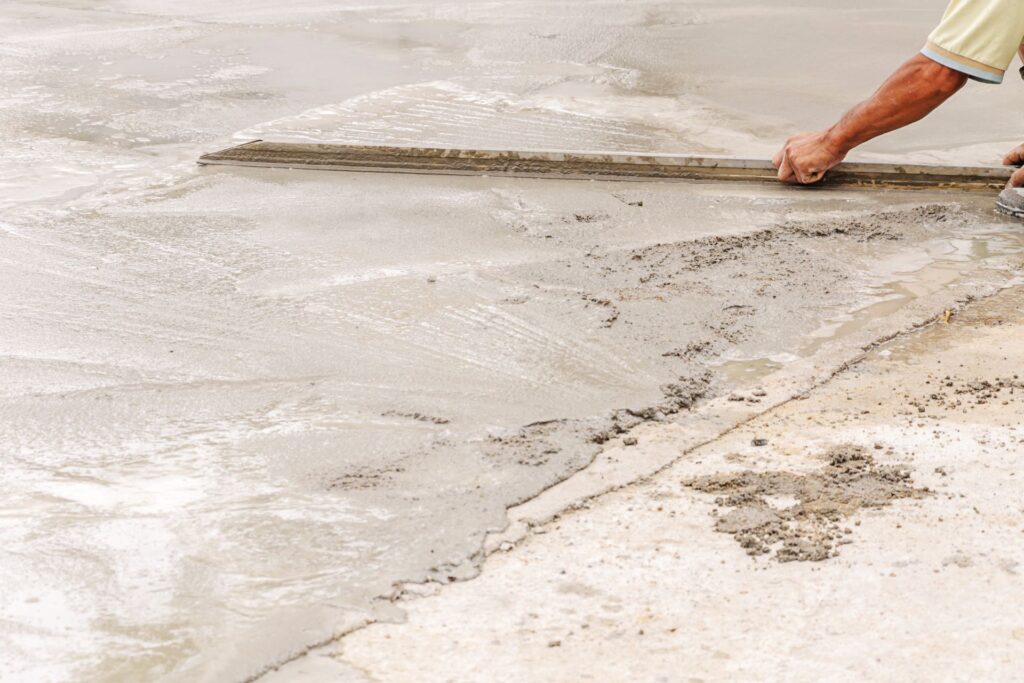
Disadvantages Of Timber Flooring
While timber flooring is a popular choice for many homeowners due to its natural beauty and durability, it does come with its share of drawbacks. Here’s a closer look at some of the disadvantages of timber flooring that you should consider before making a decision.
Susceptibility to Damage
One of the main disadvantages of timber flooring is its susceptibility to damage. Timber, being a natural material, is prone to scratches and dents. High-traffic areas, homes with pets, or spaces where heavy furniture is frequently moved are particularly vulnerable to this kind of wear and tear. Even though minor scratches and dents can add character to the floor, more significant damage can detract from its aesthetic appeal and may require repairs or refinishing.
Another significant concern is timber’s sensitivity to moisture and humidity. Timber floors can warp, cup, or swell when exposed to excessive moisture. This makes them less suitable for areas like bathrooms, kitchens, or basements where humidity levels can be high. Spills and leaks need to be addressed promptly to prevent water damage, which can lead to costly repairs.
Higher Maintenance
Timber flooring requires a higher level of maintenance compared to some other flooring options. Regular polishing and sealing are necessary to keep the floors looking their best and to protect the surface from wear and tear. These maintenance tasks can be time-consuming and may require professional services, adding to the overall cost of maintaining a timber floor.
Moreover, timber floors are at risk of pest infestation, particularly from termites. Termites can cause significant structural damage if not detected and treated promptly. Regular inspections and preventive treatments are essential to protect timber flooring from these destructive pests.
Cost Considerations
The cost of timber flooring can be a major drawback for many homeowners. High-quality timber, which offers better durability and aesthetics, can be quite expensive. The initial investment in timber flooring includes not just the cost of the material, but also installation, which can be labor-intensive and costly. Additionally, the ongoing maintenance and potential repair costs can add up over time, making timber flooring a more expensive option in the long run.
In conclusion, while timber flooring has many attractive qualities, it’s important to weigh these against the potential disadvantages. Susceptibility to damage, higher maintenance requirements, and cost considerations are significant factors to keep in mind. By understanding these drawbacks, you can make a more informed decision about whether timber flooring is the right choice for your home.

Case Studies And Examples
Concrete Slab Homes in NZ
Examples of Homes with Concrete Slab Flooring
Concrete slab flooring has become increasingly popular in New Zealand, particularly in regions prone to earthquakes. Many modern homes, from sleek urban residences to rural retreats, feature concrete slab foundations. For instance, a contemporary home in Christchurch showcases a polished concrete slab floor that blends seamlessly with its minimalist design. This type of flooring provides a stable, solid base that is both aesthetically pleasing and highly functional.
Another example can be found in a family home in Wellington, where the concrete slab serves as both the foundation and the finished floor. This home takes advantage of the thermal mass properties of concrete, which helps to maintain a consistent indoor temperature, reducing the need for additional heating and cooling. The polished surface, treated with a sealant, offers a durable, low-maintenance finish that complements the home’s open-plan layout.
Feedback from Homeowners
Homeowners who have opted for concrete slab flooring often praise its durability and ease of maintenance. Jane, a homeowner in Auckland, shares her experience: “We chose a concrete slab floor for its modern look and robustness. It’s incredibly easy to clean, and we love the way it keeps our home cool in the summer.”
Similarly, Mark and Emma from Dunedin highlight the cost-effectiveness and practicality: “Initially, we were drawn to the industrial aesthetic of a polished concrete floor, but we’ve come to appreciate its practical benefits even more. It’s resistant to wear and tear, and we haven’t had to worry about replacing it like we might with other flooring options.”
Timber Floor Homes in NZ
Examples of Homes with Timber Flooring
Timber flooring remains a classic choice for many New Zealand homes, appreciated for its natural beauty and warmth. In a renovated villa in Auckland, reclaimed timber floors add character and history to the space. The homeowners retained the original kauri floors, sanding and refinishing them to bring out their rich, golden hues. This choice not only preserves the home’s heritage but also enhances its cozy, welcoming atmosphere.
In another example, a modern beach house in the Coromandel features wide-plank oak flooring. The timber floors complement the home’s light, airy design, and provide a warm contrast to the white walls and ceilings. The natural variations in the wood grain add texture and interest to the space, making it feel inviting and lived-in.
Feedback from Homeowners
Homeowners with timber floors often express a deep appreciation for the natural aesthetic and comfort it brings. Sarah, living in a restored bungalow in Wellington, says, “Our timber floors are one of my favorite features of our home. They give a sense of warmth that you just can’t get with other materials. Plus, they age beautifully, developing a unique patina over time.”
David and Lisa from Tauranga highlight the versatility and timeless appeal: “We chose timber floors for their versatility. They look great with both traditional and modern interiors. And there’s something so grounding about having natural wood underfoot. It feels like it connects us to nature, even when we’re indoors.”
In summary, both concrete slab and timber floors offer distinct advantages and unique aesthetic qualities. By examining real-life examples and feedback from homeowners, we can see that the choice between these two types of flooring often comes down to personal preference, lifestyle needs, and the specific characteristics of each home. Whether it’s the modern, industrial look of concrete or the timeless, natural appeal of timber, New Zealand homeowners have a variety of options to suit their tastes and needs.

Making The Right Choice For Your Home
Assessing Your Needs
When it comes to making significant decisions about your home, it’s crucial to start by assessing your unique needs. This involves a deep dive into two main factors: climate considerations and your lifestyle and usage patterns.
Climate Considerations
Your local climate plays a pivotal role in determining the best materials and designs for your home. For instance, if you live in an area with high humidity or frequent rainfall, choosing materials that resist moisture and mold is essential. On the other hand, in a region with extreme heat or cold, you’ll need to consider insulation properties to maintain a comfortable indoor environment. Understanding how your local weather impacts your home can guide you in selecting materials and designs that enhance durability and comfort.
Lifestyle and Usage Patterns
Equally important is how you plan to use your space. Do you host frequent gatherings, or is your home a quiet retreat? A family with children and pets might prioritize durable, easy-to-clean surfaces, while someone who loves entertaining might focus on creating open, inviting spaces. Think about your daily routines, hobbies, and how each area of your home will be utilized. This self-assessment ensures that your choices align with your practical needs and lifestyle preferences.
Consulting with Professionals
Once you have a clear understanding of your needs, the next step is to seek expert advice. Professional consultation can be invaluable in translating your requirements into practical, effective solutions.
Importance of Expert Advice
Professionals bring a wealth of knowledge and experience that can help you avoid common pitfalls and make informed decisions. Whether it’s an architect, interior designer, or contractor, their insights can provide clarity and enhance your vision. Experts can also offer innovative ideas and solutions you might not have considered, ensuring your home not only meets but exceeds your expectations.
Getting Quotes and Estimates
Before making any final decisions, it’s essential to gather quotes and estimates from multiple professionals. This process allows you to compare costs and understand the financial implications of your choices. It’s not just about finding the lowest price but also about ensuring value for money. Detailed quotes can help you plan your budget more accurately and avoid unexpected expenses down the line.
Long-Term Considerations
In addition to immediate needs, it’s crucial to think about the long-term impact of your choices on your home’s value and your personal satisfaction.
Resale Value
While it’s important to create a space that suits your current lifestyle, consider how your choices might affect the resale value of your home. Certain upgrades and features can significantly boost your property’s market appeal, making it easier to sell in the future. Features like energy-efficient windows, modern kitchens, and updated bathrooms often yield a high return on investment.
Personal Preference and Style
Ultimately, your home should reflect your personal taste and style. While market trends are worth considering, it’s vital that you love the space you live in. Personal touches and bespoke elements can make your home uniquely yours, offering a sense of comfort and satisfaction that standard solutions might not provide. Balancing personal preferences with practical considerations ensures that your home remains a place of joy and functionality for years to come.
In conclusion, making the right choice for your home involves a thorough assessment of your needs, professional consultation, and a keen eye on long-term benefits. By carefully considering these factors, you can create a living space that is not only beautiful and functional but also a wise investment for the future.

FAQs: Concrete Slab Vs Timber Floor NZ
What are the main differences between concrete slab and timber flooring?
Concrete slabs are known for their durability, strength, and low maintenance, offering a modern and industrial look. Timber flooring, on the other hand, provides natural warmth, beauty, and comfort underfoot, with various styles and finishes available.
Which flooring option is more cost-effective in New Zealand?
The initial installation cost of concrete slabs can be lower than that of high-quality timber flooring. However, timber floors may add more value to your property over time, making them a potentially better investment despite higher maintenance costs.
How does the installation process differ between concrete slabs and timber floors?
Installing a concrete slab involves site preparation, pouring the concrete, and allowing it to cure. Timber flooring requires preparing the subfloor, laying the timber planks, and finishing with sanding and sealing.
Which flooring option is more environmentally friendly?
Timber flooring is often considered more sustainable, especially if sourced from responsibly managed forests. Concrete production has a higher carbon footprint, but its thermal mass properties can improve energy efficiency in homes.
Is concrete slab flooring comfortable to walk on?
Concrete slabs can be cold and hard underfoot, but they are ideal for underfloor heating systems, which can add warmth and comfort. Without proper insulation, they may feel less comfortable compared to timber floors.
What are the maintenance requirements for timber flooring?
Timber floors require regular maintenance, including polishing, sealing, and occasional sanding to keep them in good condition. They are also susceptible to scratches, dents, and moisture damage.
Can timber flooring be used in any part of the house?
Timber flooring is versatile and can be used in most areas of the house. However, it is not recommended for high-moisture areas like bathrooms and basements unless properly treated.
What are the potential issues with concrete slab flooring?
Concrete slabs can develop cracks over time and are susceptible to moisture issues if not properly sealed. They also require professional repair if significant damage occurs.
How do the aesthetic appeals of concrete slab and timber flooring compare?
Concrete slabs offer a sleek, modern, and industrial look, while timber flooring provides a warm, natural, and versatile aesthetic. The choice depends on personal style preferences and the desired ambiance of your home.
What factors should I consider when choosing between concrete slab and timber flooring?
Consider your climate, lifestyle, budget, and long-term needs. Think about the level of maintenance you’re willing to commit to, the desired aesthetic, and the potential impact on your home’s resale value. Consulting with flooring experts can also help you make an informed decision.
Conclusion
In conclusion, choosing between a concrete slab and timber flooring requires careful consideration of various factors. Key points to remember include the durability and low maintenance of concrete slabs, which make them ideal for areas prone to heavy use and moisture. On the other hand, timber flooring offers a warm, aesthetic appeal and can add a touch of elegance to any home, though it may require more upkeep. Ultimately, the best choice depends on your personal needs, preferences, and the specific conditions of your home. It is highly recommended to consult with professionals to assess your unique situation and receive tailored advice. By doing so, you can ensure that your decision not only enhances the beauty of your home but also aligns with your lifestyle and long-term goals.
About the Author:
Mike Veail is a recognized digital marketing expert with over 6 years of experience in helping tradespeople and small businesses thrive online. A former quantity surveyor, Mike combines deep industry knowledge with hands-on expertise in SEO and Google Ads. His marketing strategies are tailored to the specific needs of the trades sector, helping businesses increase visibility and generate more leads through proven, ethical methods.
Mike has successfully partnered with numerous companies, establishing a track record of delivering measurable results. His work has been featured across various platforms that showcase his expertise in lead generation and online marketing for the trades sector.
Learn more about Mike's experience and services at https://theleadguy.online or follow him on social media:
